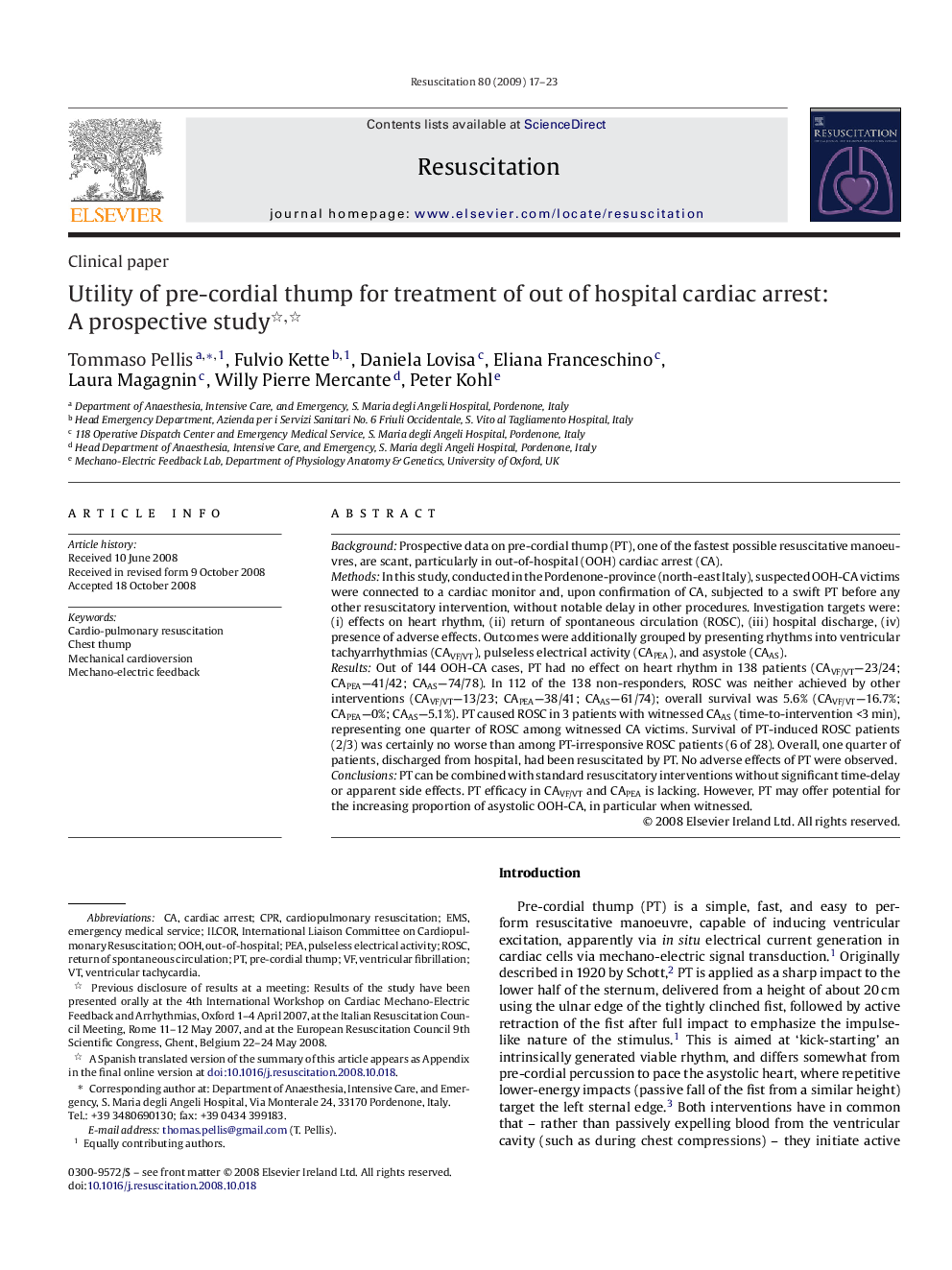| Article ID | Journal | Published Year | Pages | File Type |
|---|---|---|---|---|
| 5999426 | Resuscitation | 2009 | 7 Pages |
SummaryBackgroundProspective data on pre-cordial thump (PT), one of the fastest possible resuscitative manoeuvres, are scant, particularly in out-of-hospital (OOH) cardiac arrest (CA).MethodsIn this study, conducted in the Pordenone-province (north-east Italy), suspected OOH-CA victims were connected to a cardiac monitor and, upon confirmation of CA, subjected to a swift PT before any other resuscitatory intervention, without notable delay in other procedures. Investigation targets were: (i) effects on heart rhythm, (ii) return of spontaneous circulation (ROSC), (iii) hospital discharge, (iv) presence of adverse effects. Outcomes were additionally grouped by presenting rhythms into ventricular tachyarrhythmias (CAVF/VT), pulseless electrical activity (CAPEA), and asystole (CAAS).ResultsOut of 144 OOH-CA cases, PT had no effect on heart rhythm in 138 patients (CAVF/VT-23/24; CAPEA-41/42; CAAS-74/78). In 112 of the 138 non-responders, ROSC was neither achieved by other interventions (CAVF/VT-13/23; CAPEA-38/41; CAAS-61/74); overall survival was 5.6% (CAVF/VT-16.7%; CAPEA-0%; CAAS-5.1%). PT caused ROSC in 3 patients with witnessed CAAS (time-to-intervention <3Â min), representing one quarter of ROSC among witnessed CA victims. Survival of PT-induced ROSC patients (2/3) was certainly no worse than among PT-irresponsive ROSC patients (6 of 28). Overall, one quarter of patients, discharged from hospital, had been resuscitated by PT. No adverse effects of PT were observed.ConclusionsPT can be combined with standard resuscitatory interventions without significant time-delay or apparent side effects. PT efficacy in CAVF/VT and CAPEA is lacking. However, PT may offer potential for the increasing proportion of asystolic OOH-CA, in particular when witnessed.
